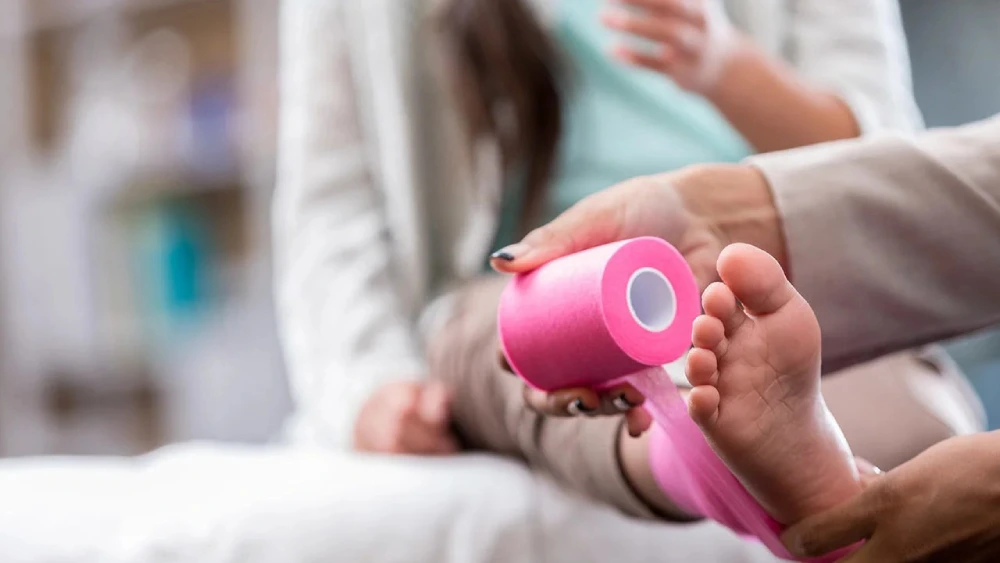When it comes to first aid, having the right tools on hand can make all the difference in providing effective care. Among the most essential items in any first aid kit are tape and bandages. These simple yet vital supplies are critical for managing wounds, preventing infection, and promoting healing. In this guide, we’ll explore why tape and bandages are so important in first aid and how to use them properly for optimal results.
1. What are Tape and Bandages?
Tape and bandages are both used to protect wounds, secure dressings, and help with the healing process. Tape is often used to hold gauze or bandages in place, while bandages are designed to cover and protect a wound or injury. They come in various sizes, shapes, and materials, each suited to different types of injuries. From small cuts to sprains, these tools are versatile and essential in treating a range of conditions.
2. Why Are Tape and Bandages Essential in First Aid?
In first aid situations, tape and bandages play several key roles:
- Protection: Bandages protect the wound from external contaminants, such as dirt, bacteria, and debris, helping to prevent infection.
- Pressure: Bandages can be used to apply pressure to a wound, helping to stop bleeding and promote clotting.
- Immobilization: Tape and bandages can be used to immobilize injured limbs or joints, reducing further damage and aiding in pain management.
- Securement: Tape is often used to secure dressings or gauze in place, ensuring they stay in position and continue to provide protection and absorb fluids.
3. Types of Tape and Bandages
There are several types of tape and bandages, each designed for specific purposes. Here’s an overview of some of the most common types:
- Adhesive Bandages (Band-Aids): Ideal for small cuts, abrasions, and blisters, adhesive bandages are simple to use and provide a sterile environment for healing.
- Gauze Bandages: These are ideal for covering larger wounds and can be used with medical tape to secure them in place.
- Elastic Bandages (e.g., ACE bandages): These bandages provide compression and support for sprains, strains, and joint injuries, helping to reduce swelling and provide stability.
- Medical Tape: Available in various materials such as cloth, paper, or plastic, medical tape is used to secure bandages or gauze in place without causing irritation.
- Hydrocolloid Dressings: A more advanced form of bandage, these provide a moist healing environment and are often used for burns, blisters, and certain chronic wounds.
4. How to Properly Apply Tape and Bandages
Knowing how to properly apply tape and bandages is crucial for effective wound care. Here are some general steps to follow:
- Clean the Wound: Before applying any bandage or tape, it’s essential to clean the wound thoroughly using clean water or a sterile saline solution.
- Apply a Dressing: For larger wounds, apply a sterile dressing or gauze pad to absorb fluids and protect the injury.
- Secure with Tape: Use medical tape to secure the dressing in place. Be sure not to apply the tape too tightly, as this could restrict blood flow.
- Wrap with a Bandage: For additional protection, wrap an elastic or gauze bandage around the injury, securing it with medical tape. Apply gentle pressure if needed to stop bleeding, but avoid wrapping too tightly.
5. Common Mistakes to Avoid
When using tape and bandages, it’s important to avoid certain common mistakes that could compromise the healing process:
- Too Tight Wrapping: Wrapping a bandage too tightly can reduce circulation and cause further injury. Always ensure that the bandage is snug but not constricting.
- Not Changing Dressings Regularly: Keeping bandages on too long can increase the risk of infection. Make sure to change dressings regularly, especially if they become wet or soiled.
- Using the Wrong Type of Bandage: Not all injuries are the same. Make sure you choose the appropriate type of bandage or tape based on the severity and location of the wound.
6. When to Seek Medical Help
While tape and bandages are crucial for treating minor injuries, there are times when professional medical help is needed. You should seek medical attention if:
- The wound is deep or won’t stop bleeding after applying pressure.
- The injury involves a broken bone or dislocated joint.
- The injury shows signs of infection, such as redness, swelling, or pus.

